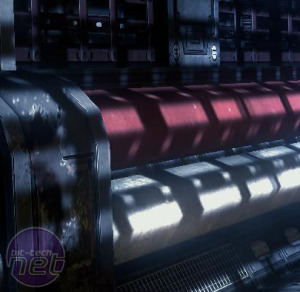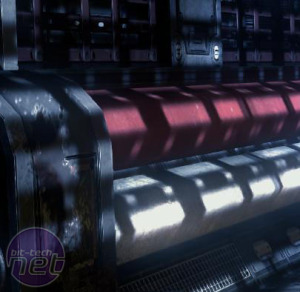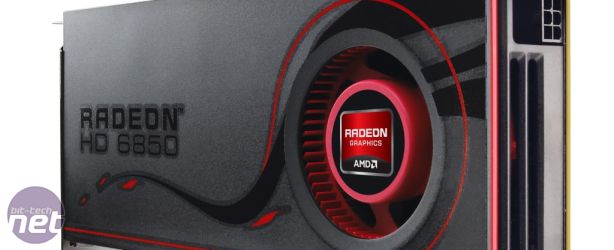New Features, Improvements and 3D
While the Radeon HD 6800 GPU might not be all that new, ATI has added a few more tangible features and enhancements, plus one rather annoying downgrade from the HD 5000-series. The most noticeable of the new technology is the range of outputs available on standard cards, with six ports of varying size and format. Standard HD 6800 cards are due to have two mini-DisplayPort, one HDMI and two DVI outputs, though manufacturers can make adjustments as they like.Those with screens with over 1,920 x 1,200 pixels should warned that only one of the DVI outputs in dual-link, and that it’s not clearly marked on most cards which of the two this is – just bear this in mind if your PC refuses to give you a desktop beyond 1,280 x 800. Why ATI felt the need to skimp on this basic support is beyond us.
ATI was keen to extoll the virtues of the new DisplayPort 1.2 spec that the HD 6000-series supports. This enables audio bit-streaming and Multi Stream Transport (MST), both of which are of little value on a gaming-class graphics card at the moment. Audio bit-streaming might be useful for a HTPC (Home Theatre PC), but not so much on a gaming PC, unless you use the built-in speakers of your monitor (hint: don’t).
Multi Stream Transport allows one DisplayPort output to link to up to three DisplayPort displays, either via a daisy-chain or via a forthcoming MST hub (which will actually allow you to connect up to four screens over any display standard). According to AMD, ‘the DisplayPort 1.2 hubs are expected to be available sometime in 2011. No cost has been determined, but we’re confident that they will be affordable, and enable a more cost effective solution for multi-display gaming than current competing solutions that require two cards.’ Rumour has it that the hubs will only be on sale well into next year and will cost around $150.
Click to enlarge
ATI Does 3D
The HDMI port supports HDMI 1.4a, which allows audio and video streaming of Blu-ray 3D. This is pertinent, as AMD introduces 3D support with the HD 6000-series, dubbing its technology the buzzword-tastic HD3D. AMD is using a passive, polarised method for its 3D, unlike Nvidia and it’s 3D Vision shutter glasses. To enable 3D on an ATI system you’ll need a piece of middleware software from a company such as DDD. At the moment there are very few displays that ATI’s version of 3D.The new 3D support matches up with the new UVD 3 technolgy to enhance video playback (again a slightly pointless feature on a gaming-grade graphics card if you ask us), which adds support for a few MPEG formats that UVD 2 didn’t cater for.
New AA and better AF
As this is the launch of a GPU, there’s a new format of AA that you can use, and it’s called Morphological AA, presumably derived from the meaning ‘the study of differences in shape’. It’s a full-screen AA method with adaptive filtering that was programmed via DirectCompute; MAA detects edges (or at least parts of the scene where there’s a stark difference in pixel colour) and shades accordingly to smooth the jaggies out. You’ll need Catalyst 10.10 to apply MAA, and if you want to use it, you have to force it via the driver.

The image on the left has MAA applied, though you'll have to click for big to appreciate the effect.
ATI has also updated its AF support, as it suffered a little at certain MIP levels – this has been improved, and the HD 600 maintains the rotational invariancy of its HD 5000 predecessor. This means that textures blend smoothly no matter what angle they appear to the viewpoint.

MSI MPG Velox 100R Chassis Review
October 14 2021 | 15:04










Want to comment? Please log in.